
by Library News
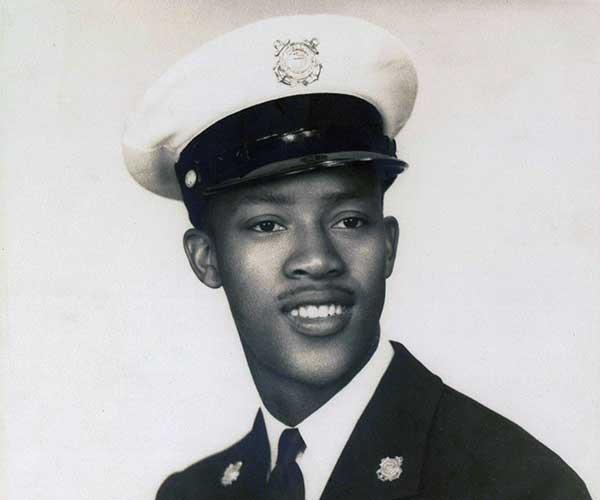

by Library News
In the newest exhibit at the National World War II Museum in New Orleans, "What World War II Means Today," Coast Guardsman and UTA Maverick Reby Cary's story of perseverance and achievement stands out. UTA Libraries Special Collections worked with the museum and supplied a photo of Cary from the UTA News Service Photograph Collection for the exhibit.
Cary was UTA's first African American professor in 1969, teaching in the history department. He taught the university's first African American history courses and launched the Minority Cultures Collection with UTA Libraries. He was also the associate dean of student affairs and UTA's first African American administrator.
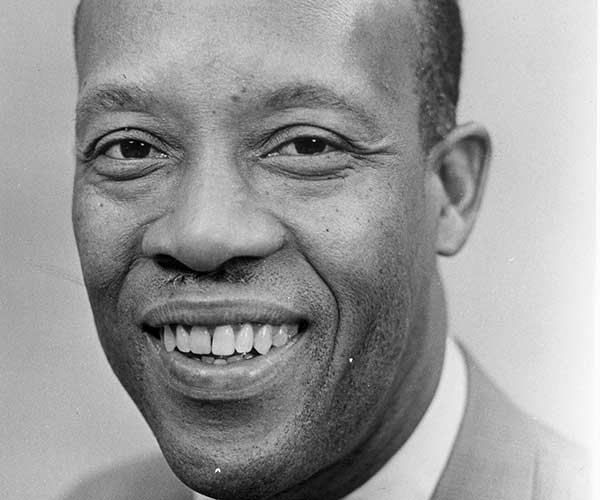
This is a photo of Reby Cary from the University of Texas at Arlington News Service Photographic Collection that is part of an exhibit at the National World War II Museum.
Before coming to the university, Cary served as a radio operator in the Coast Guard aboard the USS Cambria, an attack transport ship, in the Pacific theater of operations during World War II.
In a 2007 interview that is part of the Veterans History Project with the Library of Congress, Cary spoke about what he saw during the Battle of Saipan.
"Saipan, one thing that bothered me a little bit, we lost, well, the Marines that were hittin' the beach on the LSTs (Landing Ship, Tank) and LCIs (Landing Craft Infantry)," Cary stated in the interview. "They were being picked off like mad, and they even had bodies floating by our ship; you couldn't even get 'em out."
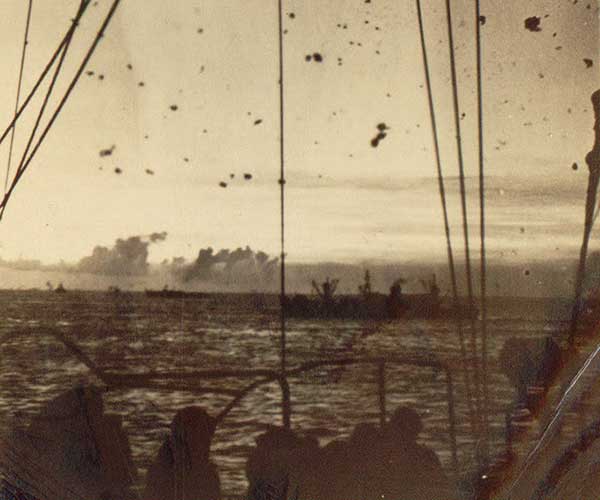
This is a photo of U.S. Navy sailors standing on the deck of the U.S.S. Cambria during the Battle of Saipan in 1944. Photo courtesy of Reby Cary Collection in the Veterans History Project, American Folklife Center, Library of Congress.
Later in the interview, he shared that the Battle of Okinawa was the worst. During the battle, he recalled that the Cambria faced a storm with winds and rain and bombs hitting ships around them.
Dr. Rob Citino, Distinguished Fellow with the National World War II Museum, stated that when putting together this exhibit, museum staff wanted to look at the legacy and impact of World War II in later decades in events like the Civil Rights Movement and today. When they read Cary's story, they knew it would be a perfect fit.
"Many African Americans came back and were not only proud of their service record, as all Americans were, but they pitched in to change the country in a positive fashion," Citino said. "That is why the National World War II Museum is highlighting a figure like Reby Cary and why we are talking about the civil rights struggles of the postwar years. We really think that is an important legacy of World War II."
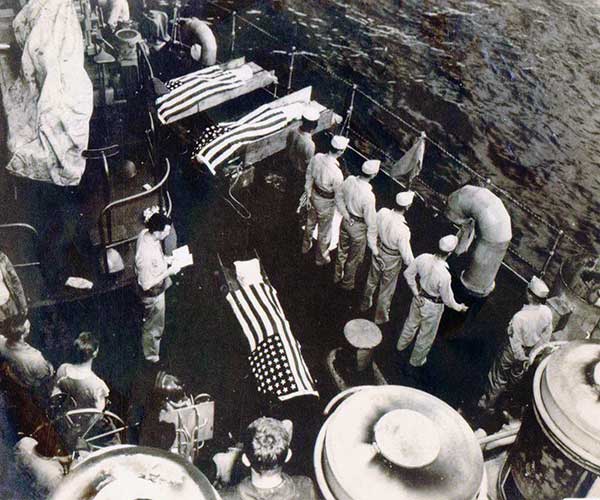
U.S. Navy Sailors pay their respects to their fallen shipmates during a burial at sea on the U.S.S. Cambria. Photo courtesy of Reby Cary Collection in the Veterans History Project, American Folklife Center, Library of Congress.
After being discharged from the Coast Guard in 1945, Cary worked in education, helping to establish McDonald College of Industrial Arts, a trade school for African American veterans, in 1946 in Fort Worth.
He later taught at Dunbar High School, Tarrant County Junior College, now Tarrant County College and UTA, where he helped remove the confederate flag from campus.
Cary recalled that confederate flags were flown at UTA football games, there were mock slave auctions on campus and there were demonstrations taking place all the time.
He first came to campus as a guest speaker before being recruited as a professor.
According to the Fort Worth School District's website, during his lecture, he criticized Arlington's housing policies, calling them racist, and chastised African American students over their recent protests of the confederate mascot, stating their academic coursework was the only way to make a profound change.
"I didn't want to go to all that fightin' stuff they (UTA) had out there and plus, I was making more money selling real estate in the evenings. I had two or three closings there every week out there in Forrest Hill. I didn't want to waste my time going out there, but they convinced me to go and the Black students said, 'Oh yeah, you got to come,'" Cary stated in the 2007 interview. "I went; of course, I'm glad I did. (We) got rid of that flag, the number of Black students increased; when I went, there were about 150 students, Black students, and it had just started increasing. In a few weeks, I got that minority cultural center set up."
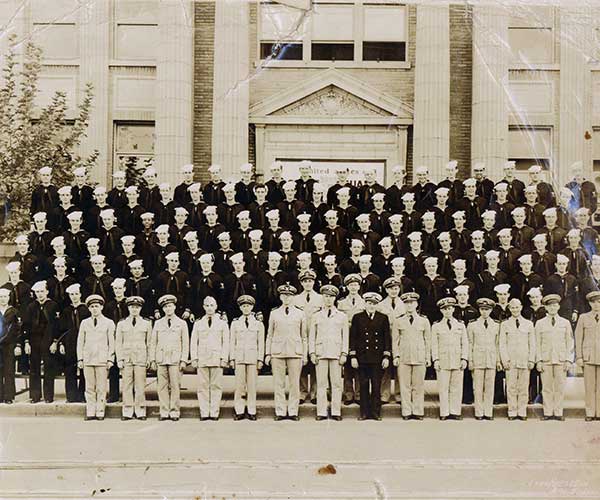
Reby Cary (5th row from bottom, 4th from the left) in the group photo of the graduating class, U.S. Coast Guard Radio School. Photo courtesy of Reby Cary Collection in the Veterans History Project, American Folklife Center, Library of Congress.
While at UTA, Cary was elected to the Fort Worth School Board. He later served in the Texas House of Representatives from 1979-1985 and held numerous positions in civic organizations.
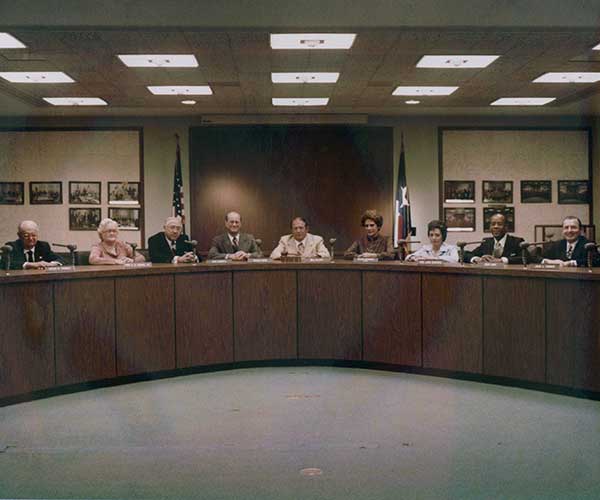
Members of Fort Worth School Board. Reby Cary is second from the right in the photo. Photo courtesy of Reby Cary Collection in the Veterans History Project, American Folklife Center, Library of Congress
Citino stated that Cary's story shows us that anything is possible and is an example that students can look up to today.
"I think the real takeaway from Reby's story is this is a guy born in Jim Crow era Texas, but it didn't hold him back. He served his country bravely in far-flung theaters of operation during World War II and came home. He was a radioman and wanted to do radio work, but he couldn't because he was a Black man. So, he began a long career as an educator," Citino said. "Reby Cary was a man who broke down walls and then walked through the gaps he had created to make things better for African Americans and all Americans."
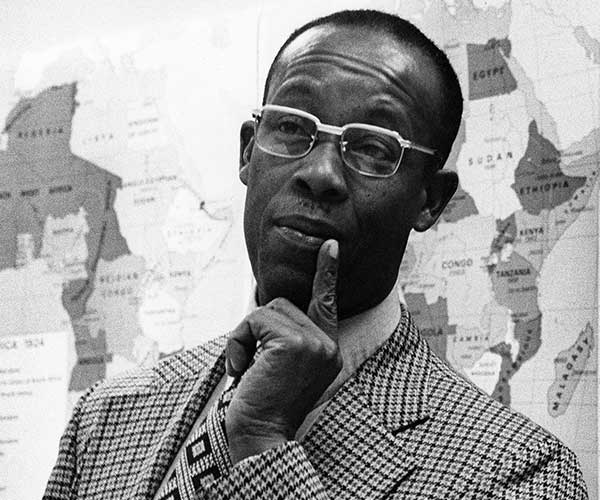
Portrait of Reby Cary who was the first African American professor to be hired by UTA in 1969, where he served as an assistant professor of history and an associate dean of student life. This photo is part of the Shorthorn Photographs Collection
Citino encourages people to visit the National World War II Museum in New Orleans to learn about Cary's story and other veterans who fought bravely on the battlefield and made life better for future generations at home.
The National World War II Museum is at 945 Magazine Street in New Orleans, Louisiana. You can find additional information on the museum's website.
You can view the full 2007 interview with Reby Cary on the Library of Congress' website.
Add new comment